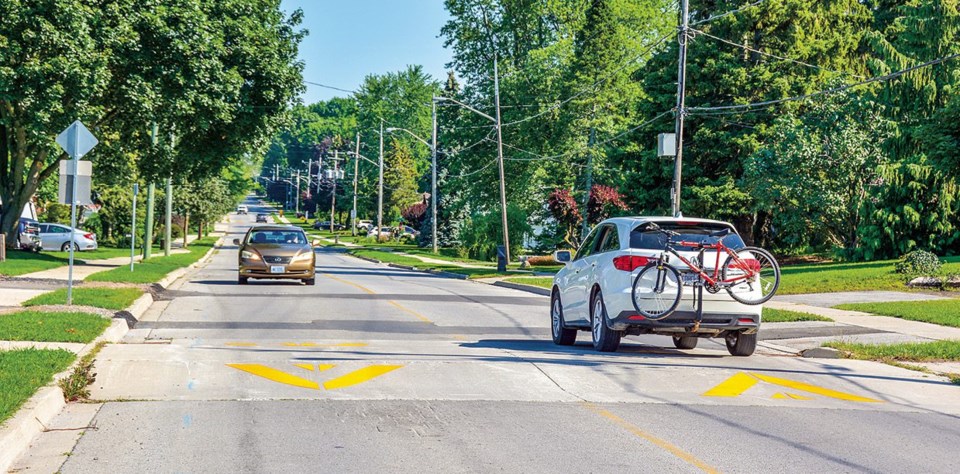Thermoplastic paint hoped more durable
The four speed humps on Haist Street, between Canboro Road and Welland Road, have a shiny new set of florescent yellow stripes, a message to passing motorists to reduce their speed in the highly-populated area and beware the bumps.
Jason Marr, Director of Public Works for the Town of Pelham, told the Voice that local residents had alerted his staff to the fact that the asphalt humps had lost their bright markings, and had become less conspicuous. He said that Region usually performs line painting for Pelham, but that the paint they use often begins to fade not long after application. Marr said that he subcontracted the current job to obtain an upgraded, thermo-plastic paint which has been proven to be more durable.
“The thermo-plastic paint is thicker, and applied with heat,” said Marr, who commented that the speed humps unquestionably slow the traffic down on Haist Street.
“I haven't received any complaints from residents about the speed humps being in place, but I know that emergency services do not like them, because they negatively impact their response time.”
Pelham Mayor Marvin Junkin told the Voice that the contract was awarded to BP Pavement Markings, of Hamilton.
“They were available to do the job immediately, so staff told them to go ahead,” said Junkin. “I am curious to see how long this paint lasts, because for some reason everything else we have tried has only lasted six months or so. Hopefully this material will be like white on rice.”
Junkin said the job cost the Pelham taxpayers $3800.
Speed humps are a standard traffic-calming measure in many communities, and are most commonly used to enforce low speed limits. But they are not without their detractors, who point to increased traffic noise as cars brake and accelerate, and vehicle damage if traversed at too great a speed, especially for low-slung vehicles. An American company called Radarsign advocates for traffic-calming control through the use of speed limit flashing signs that note the speed at which a car is approaching. They contend that the signs are silent and affordable, with a solar-power option making them a green solution.
A Nobel Prize-winning American physicist, Arthur Compton, worked out the basic concept of the speed hump in 1953, after he became annoyed at cars racing past his office at Washington University, in St. Louis, Missouri, where he was chancellor.
Trafficschoolonline.com noted that speed humps were approved for use in the United States in 1983, after the first such device in Europe was installed on roadways in the Netherlands in 1970. Over the years, speed humps have been shown to reduce the frequency of several factors associated with collisions. One study found that annual crash frequency decreased by 39 percent on streets that had been treated with speed humps, and that the number of injuries sustained in the crashes were reduced by 46 percent.
Of course, one of the greatest benefits of installing speed humps in residential areas is the increased safety it provides to pedestrians. According to the American Journal of Public Health, speed humps are associated with an almost 60 percent reduction in injury or death in neighborhood children struck by a vehicle.



